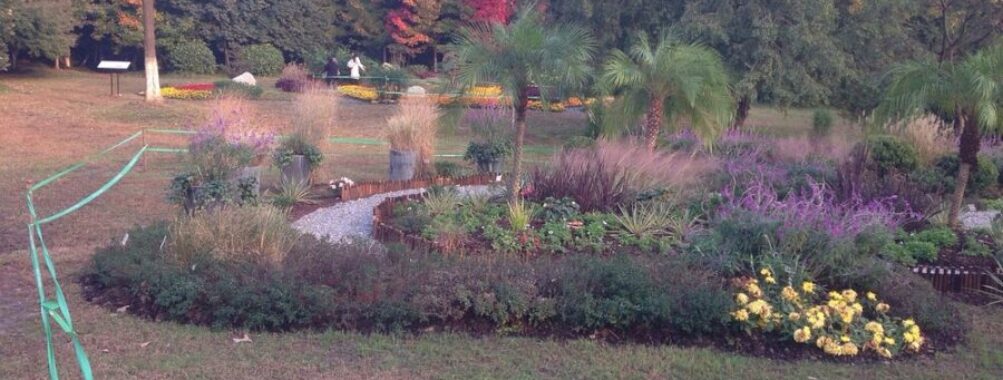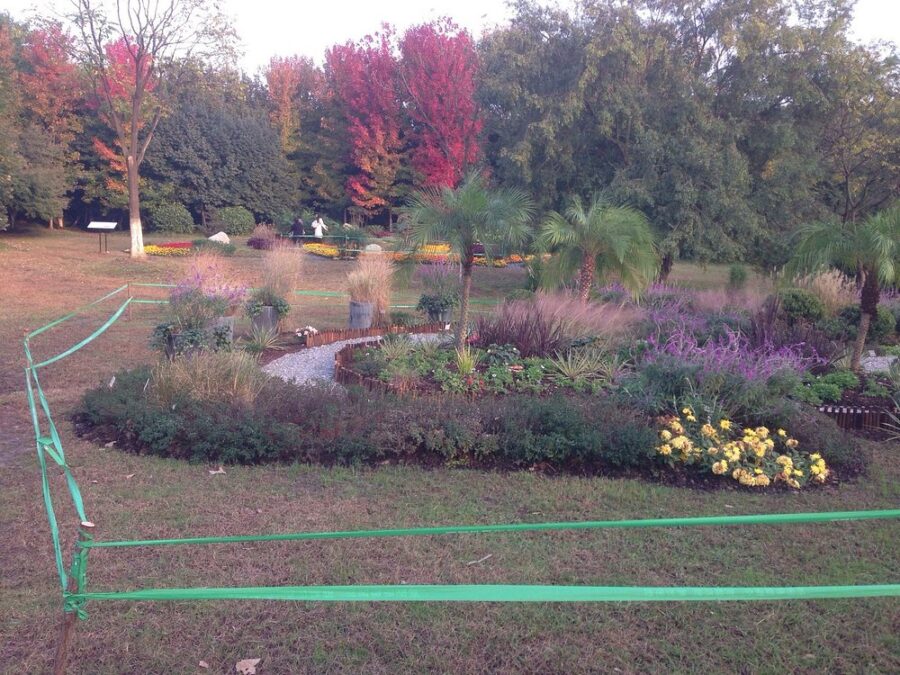
Hefei Botanical Garden
Table of Contents
History and Significance

If you’re craving a break from the urban buzz of Hefei city, make your way to the Hefei Botanical Garden in Shushan District — a sprawling green sanctuary that blends nature, art, and science beautifully. This garden, stretching across about 108 hectares, isn’t just a patch of prettiness; it’s a living museum that chronicles the rich diversity of plant life and offers a window into ecological conservation right on the outskirts of a bustling metropolis.
Nestled beside the Dongpu Reservoir, the garden came into being as part of Hefei’s efforts to balance modern urban growth with natural preservation. It reflects China’s deep respect for horticultural tradition and scientific research. Over time, it’s developed into a space for both leisure and learning, welcoming visitors to experience over 3,000 plant species laid out in 15 thematic sections — a sprawling green classroom under the open sky.
Historically, botanical gardens across China have played pivotal roles not just as places of beauty but as centers for botanical study, medicinal research, and cultural expression. Hefei Botanical Garden carries that torch proudly, inviting you to lose yourself in zones dedicated to everything from fragrant Osmanthus groves and sculptured Bamboo forests to vibrant Plum gardens.
Main Attractions and Activities
Walking into Hefei Botanical Garden, you’re greeted by an orchestra of colors and scents that shift with the seasons. Tulips, daffodils, crocuses, and cherry blossoms greet spring visitors with bursts of pastels, while autumn transforms the space with yellow sycamores and fiery red maples.
One of the more charming features is the miniaturized stone Elephant Road and a scaled version of the China Pavilion from the famed Ming Xiaoling Mausoleum. These architectural nods add a cultural touch, bridging natural beauty with historical artistry. If you keep wandering, you’ll come across the Bamboo grove that feels straight out of a traditional wuxia film with its tall, swaying stalks providing shade and a whispering soundtrack.
For those who fancy a bit of exploration, the garden sits adjacent to Dashushan Forest Park, making a perfect combo if you want to extend your green excursion. Strolls around the large reservoir, which sometimes feels like your own private sea, offer moments of zen and excellent photo ops — especially as the water reflects the sky and surrounding flora.
And if you want some activity, you can rent bicycles inside the garden to cover more ground—there’s a breeze to accompany your ride, and plenty of pockets to stop, relax, and snap stunning nature shots.
Visitor Experience
Let me tell you, this garden is a breath of fresh air—literally and figuratively. Many visitors, including myself, appreciate how vast it is. Even on busier days, you never feel boxed in by crowds. The territory is wide enough to find quiet corners where the only sounds are the birds and the rustle of leaves.
Walking beneath the neatly pruned plum trees or watching pigeons flutter in the dedicated pigeon garden made me feel delightfully disconnected from city chaos. There’s a casual charm here; nobody’s rushing you. Groups, families, and couples all find their niche in various corners — whether that’s the colorful flowerbeds or the peaceful bamboo walkways.
The garden staff are usually friendly, though English signage can be limited. Still, the visual feast speaks for itself—sometimes, even words get in the way when you just want to soak it all in.
Tips for Visitors
If you’re heading there, here’s what I wish someone had told me before my first visit:
-
Best time to visit: April to May when flowers are in full bloom, especially tulips and cherry blossoms.
-
Wear comfy shoes: You’ll be walking a lot, through paved and sometimes uneven paths.
-
Bring a camera or phone: The garden offers endless photo-worthy moments — from delicate flowers to sprawling landscapes.
-
Plan to spend a few hours: The garden’s size and variety mean rushing through won’t do it justice.
-
Rent a bike for a fun change of pace: It lets you explore more and feel the breeze while surrounded by nature.
-
Bring water and sunscreen: There’s some shade, but the sun can be strong on the open lawns.
-
Try to visit on a weekday morning: It’s generally quieter and more peaceful, letting you absorb the tranquil atmosphere fully.
-
Don’t miss the Bamboo garden and the replica pavilions: These offer a mix of natural charm and cultural touchstones.
-
If you visit in autumn, look out for vivid maple and sycamore colors that paint the garden golden and red.
Accessibility and Facilities
Navigating Hefei Botanical Garden is fairly straightforward. The garden features well-laid-out pathways that suit a comfortable walk or bike ride. While parts of the garden have gently rolling hills or uneven natural paths, most main areas are accessible, though some visitors with mobility challenges may find certain sections trickier.
Facilities are basic but sufficient. There are restroom facilities near the main entrances and some rest areas for those needing a break. Entry is affordable—adults pay about 20 RMB, with concessions for students, making it accessible for most visitors.
The garden is serviced by several local bus routes with stops nearby, and taxis or rideshares offer easy access. Parking availability is decent for those coming by car.
Unique Features
What sets this garden apart is its size and thoughtful blend of botanical diversity with cultural elements. The way the garden seamlessly incorporates miniature architectural replicas into its design is a refreshing touch not commonly found in botanical spaces.
The sheer scope of plant varieties—over 3,000 species—is impressive. It’s a horticulturist’s dream but also perfectly inviting for casual visitors who just want to wander and pause where the flowers or trees speak loudest to them.
I remember standing in the Bamboo garden and feeling a swell of calm, the afternoon sunlight filtering through long stalks like a scene from an old movie. Moments like these lend a poetic quality to a visit here.
The adjoining reservoir adds a water element that softens the landscape and offers habitats for various birds, making it a hotspot for birdwatchers.
Overall Impressions
Hefei Botanical Garden is one of those rare urban escapes that manages to be expansive, diverse, and still intimate. It’s a place where you can spend hours losing yourself in nature’s quiet language—without leaving the city for miles.
The garden presents a peaceful retreat that doesn’t try too hard but succeeds naturally in connecting you to the seasons, plant life, and a modest reflection of Chinese cultural heritage through its pavilions and landscapes.
Whether you’re a serious plant lover or someone just looking for a pretty place to stroll on a sunny afternoon, this garden has your back.
Pros and Cons
Pros:
-
Huge garden with enormous botanical diversity
-
Seasonal flower displays that offer different experiences year-round
-
A combination of natural and cultural attractions (pavilions, mini Stone Elephant Road)
-
Offers bike rentals for fun and longer exploration
-
Affordable entrance fees and reasonably maintained facilities
-
Adjoining reservoir adds scenic variety and birdwatching opportunities
Cons:
-
English signage is limited, which might make interpretation tricky for non-Chinese speakers
-
Some paths can be uneven or challenging for those with mobility issues
-
Facilities are basic, lacking cafes or extensive visitor centers inside
-
Location requires a bit of a walk from the bus stop or parking area
-
The garden can get busy during peak bloom seasons, though never uncomfortably crowded
Location
Places to Stay Near Hefei Botanical Garden
Find and Book a Tour
Explore More Travel Guides
No reviews found! Be the first to review!